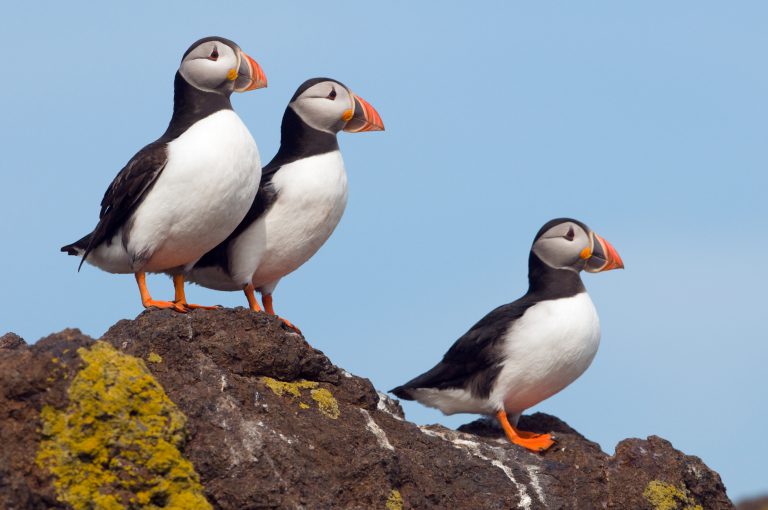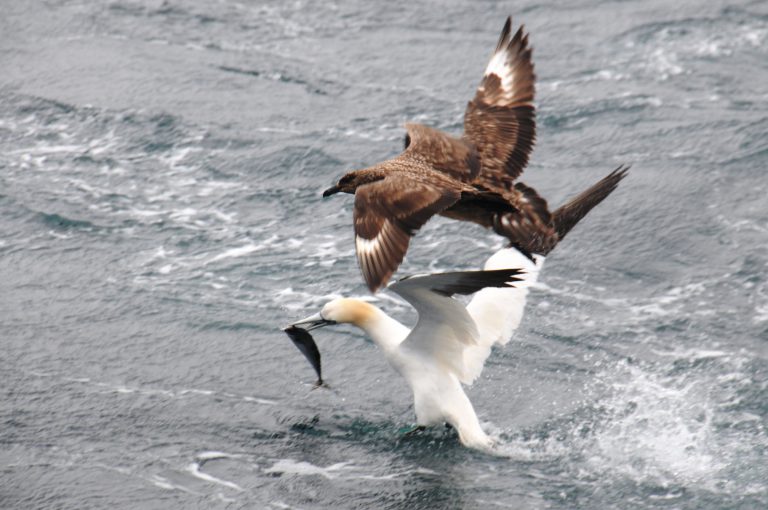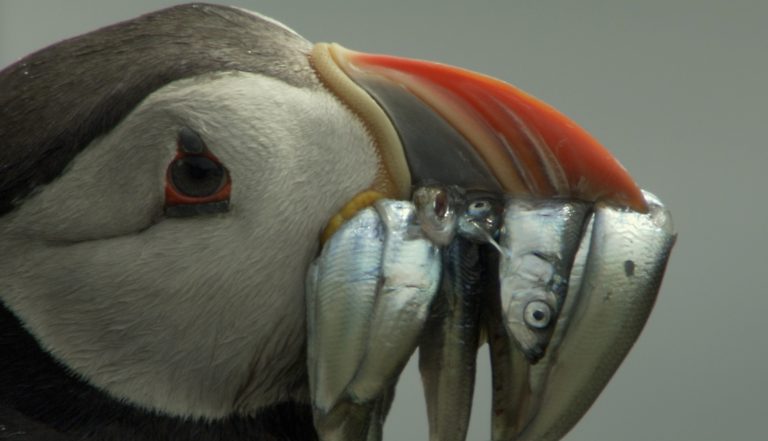
Image: SNH
A Vital Place for Seabirds
The Hope Spot is an important feeding ground for seabirds, especially guillemots, razorbills, puffins, kittiwakes, gannets, gulls, shags and terns, with breeding colonies on many islands and skerries.
Less is known about their winter distribution, with many species spending time far from land. A few great and Arctic skuas also occur within the Hope Spot area and are dependent upon the other seabirds.

Image: SNH
The Hope Spot’s sheltered waters are also home to important populations of resident eider duck, red-breasted merganser and migratory great northern divers, which also overwinter further south, in the Sound of Gigha proposed Special Protection Area.
The eider duck population in the adjacent Loch Fyne area has been in decline over the last three decades of monitoring (Argyll Bird Club; Clyde volunteers). The Hope Spot includes important staging areas for migrant waders and wildfowl, such as dunlin, golden plover, black-tailed godwit and whooper swan.
In winter, small protected populations of barnacle and Greenland white fronted geese stay in the area. The barnacle geese roost on islands in the Sound of Jura, where corncrakes breed in summer.
Breeding birds of prey including the peregrine falcon, both species of eagles and osprey. The estuary of the River Add, near Crinan, is a good place to see ospreys catching fish. Mull has the highest density of breeding eagles anywhere in Europe.
Visitors coming to the island to see the eagles bring £5m a year to the local economy, according to a study for the RSPB.
Current Research/Monitoring
Recent tracking of auks and other seabirds, undertaken by the Centre for Ecology; Hydrology and the EU Future of the Atlantic Marine Environment (FAME) and Seabird Tracking and Research (STAR) projects, has shown the importance for seabirds of the shallow seas and high current areas in and around the Hope Spot, such as the Gulf of Corryvreckan and the Sound of Islay.

Volunteers monitor birds in and around the Hope Spot, for instance on Colonsay, Oronsay and Luing (Argyll Bird Club), with the BTO and other organisations coordinating wetland (WeBs) and breeding bird surveys across the area.
The Treshnish Isles Auk Ringing Group has been monitoring and ringing seabirds over the last 40+ consecutive summers.
For decades, Dr Clive Craik (SAMS) has studied the impact of mink on tern and gull colonies, charting a 40% decline in the breeding birds in and around the Hope Spot area.
There is a long history of bird monitoring by the RSPB on Mull, and outside but near the Hope Spot, on Coll, Tiree, Oronsay, Islay and Mull. Many of these birds depend on feeding areas inside the Hope Spot.
History
Where data exists there is a clear trend of significant declines in the summer bird populations along the Inner Hebrides coast over the last four or more decades.
Threats
The marine birds depend upon a vibrant mix of shallow nursery areas for fish along with seasonal influxes of sand eels and herring. Introduced American mink have caused widespread abandonment of nesting colonies from Rum to Kintyre.
Get Involved
Control of mink by local volunteers and the provision of artificial tern rafts have stimulated re-colonisation by the once abundant seabirds along the coast. The Argyll Bird Club and BTO welcomes volunteer bird surveyors.


